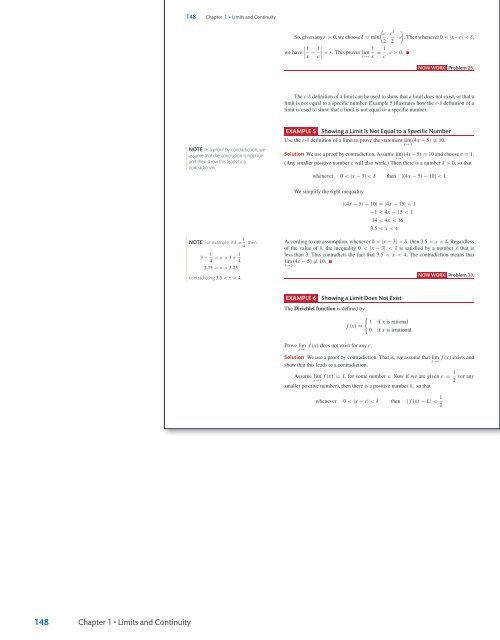Sullivan Microsite DigiSample
You also want an ePaper? Increase the reach of your titles
YUMPU automatically turns print PDFs into web optimized ePapers that Google loves.
<strong>Sullivan</strong> AP˙<strong>Sullivan</strong>˙Chapter01 October 8, 2016 17:4<br />
<strong>Sullivan</strong><br />
148 Chapter 1 • Limits and Continuity<br />
( ) c<br />
So, given any ε>0, we choose δ = min<br />
2 , c2<br />
2 · ε . Then whenever 0 < |x−c| 0. ■ NOW WORK Problem 25.<br />
The ε-δ definition of a limit can be used to show that a limit does not exist, or that a<br />
limit is not equal to a specific number. Example 5 illustrates how the ε-δ definition of a<br />
limit is used to show that a limit is not equal to a specific number.<br />
NOTE In a proof by contradiction, we<br />
assume that the conclusion is not true<br />
and then show this leads to a<br />
contradiction.<br />
EXAMPLE 5<br />
Showing a Limit Is Not Equal to a Specific Number<br />
Use the ε-δ definition of a limit to prove the statement lim<br />
x→3<br />
(4x − 5) = 10.<br />
Solution We use a proof by contradiction. Assume lim<br />
x→3<br />
(4x −5) = 10 and choose ε = 1.<br />
(Any smaller positive number ε will also work.) Then there is a number δ>0, so that<br />
whenever 0 < |x − 3|




